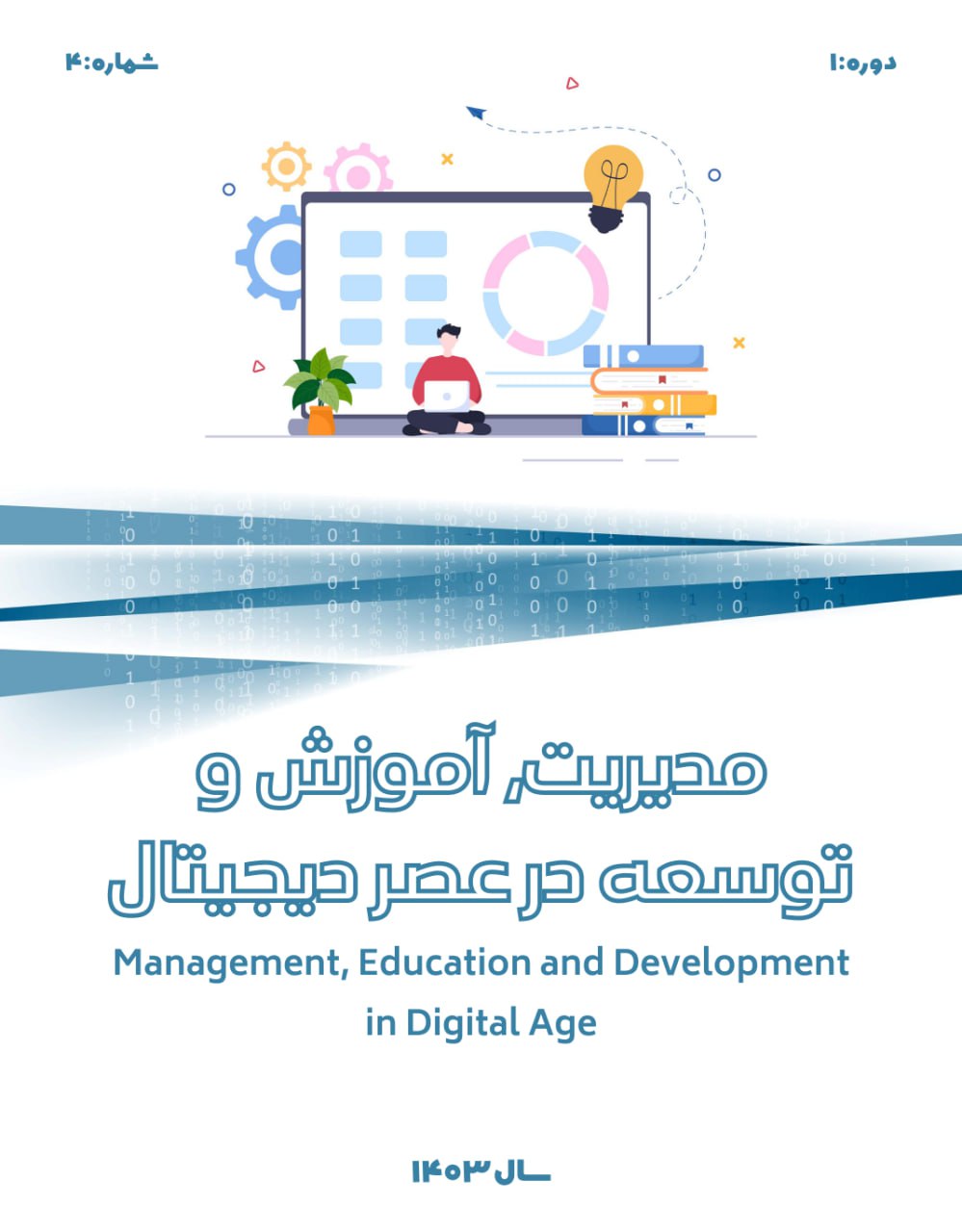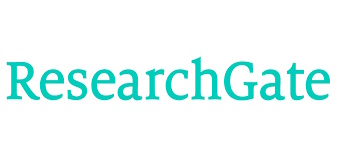ارزیابی مؤلفههای ظرفیتسازی سازمانی جهت ارتقاء بهرهوری منابع انسانی در نهادهای غیردولتی
کلمات کلیدی:
ظرفیتسازی سازمانی, بهرهوری منابع انسانی, نهادهای غیردولتی, فرهنگ سازمانی, سیستمهای پاداشچکیده
a
هدف پژوهش حاضر ارزیابی و شناسایی مؤلفههای ظرفیتسازی سازمانی به منظور ارتقاء بهرهوری منابع انسانی در نهادهای غیردولتی، به ویژه در شهرداری کرج، میباشد. این پژوهش از نوع کاربردی–توسعهای و به روش آمیخته (کیفی–کمی) انجام شد. در بخش کیفی، جامعه آماری شامل خبرگان نظری و تجربی مرتبط با موضوع بود و با روش نمونهگیری هدفمند غیرتصادفی، 19 نفر بر اساس اصل اشباع نظری انتخاب شدند. دادهها از طریق مصاحبه نیمهساختاریافته گردآوری و با روش تحلیل مضمون و کدگذاری نظری تحلیل شدند. در بخش کمی، جامعه آماری شامل کلیه کارکنان شهرداری کرج بود که 212 نفر با روش نمونهگیری تصادفی طبقهای نسبی انتخاب شدند. ابزار گردآوری دادهها، پرسشنامهای 89 گویهای برگرفته از یافتههای کیفی بود. روایی پرسشنامه از طریق روایی محتوایی و سازه، و پایایی آن با ضریب آلفای کرونباخ، پایایی ترکیبی و امگای مکدونالد تأیید شد. تحلیل دادهها با نرمافزارهای SPSS-27 و SmartPLS-V3 انجام گردید. نتایج نشان داد مدل ظرفیتسازی سازمانی برای ارتقاء بهرهوری منابع انسانی در نهادهای غیردولتی شامل چهار بعد اصلی است: توسعه مهارتها (آموزش فنی، آموزش مدیریتی، یادگیری مداوم و مهارتهای نرم)، فرهنگ سازمانی (فرهنگ یادگیری، همکاری تیمی، اعتماد و خلاقیت)، سیستمهای پاداش (پاداش مبتنی بر عملکرد، فرصتهای پیشرفت شغلی، تشویق و محیط حمایتی) و فناوری (زیرساخت فناوری، دسترسی به اطلاعات، ابزارهای همکاری و نوآوری). نتایج تحلیل عاملی تأییدی نشان داد همه بارهای عاملی بالاتر از 0.7 و معنادار هستند. شاخص برازش کلی مدل (GOF=0.547) و شاخص NFI=0.966 نشاندهنده برازش قوی مدل بود. یافتهها بیانگر اعتبار درونی و بیرونی مدل از منظر پاسخدهندگان کمی و کیفی بودند. ظرفیتسازی سازمانی، فرآیندی چندبعدی است که ارتقاء مهارتها، بهبود فرهنگ سازمانی، طراحی نظام پاداش مؤثر و بهکارگیری فناوری را دربرمیگیرد. این عوامل به طور همافزا میتوانند بهرهوری منابع انسانی و کارایی نهادهای غیردولتی را افزایش دهند. اجرای الگوی ارائهشده میتواند به بهبود عملکرد، افزایش رضایت شغلی و ارتقاء کیفیت خدمات شهری در نهادهایی چون شهرداریها منجر گردد.
دانلودها
مراجع
Abiddin, N. Z., Ibrahim, I., & Abdul Aziz, S. A. (2022). Non-governmental organisations (NGOs) and their part towards sustainable community development. Sustainability, 14(8), 4386. https://doi.org/10.3390/su14084386
Flink, C., & Chen, C. (2021). Management capacity, financial resources, and organizational performance: evidence from state transportation agencies. Public Performance & Management Review, 44(6), 1341-1366. https://doi.org/10.1080/15309576.2021.1933108
Ghorbanizadeh, V. (2021). Process Capabilities of Knowledge Management and Open Innovation and Their Role in Human Resource Productivity in Knowledge-Based Companies. Human Resource Management and Support Development, 62(16), 125-146. https://sid.ir/paper/962494/fa
Jafarzadeh. (2024). Designing a Model of Entrepreneurial Competencies for Managers in Non-Governmental Public Institutions (Case Study: Chamber of Commerce, Industries, Mines, and Agriculture of Iran). Entrepreneurship and Innovation Research, 3(2), 22-42. https://journal.iransaei.ir/article_206951.html
Jahanbaz, I. S., Firooni, & Mohajer. (2023). Identifying Factors Affecting the Enhancement of Operational Employees' Productivity in the Air Defense Command and Control Network. Scientific-Research Journal of Command and Control, 7(1), 17-33. https://ic4i-journal.ir/article-1-361-fa.pdf
Kamali, R., & Mazaei. (2023). Examining the Impact of Human Resource Quality, Performance Evaluation, and Incentives on Employee Productivity (Case Study: Employees of Bushehr University of Medical Sciences). Scientific Journal of Modern Research Approaches in Management and Accounting, 7(27), 1029-1043. https://majournal.ir/index.php/ma/article/view/2290
Marzec, J. (2022). Early warning mechanisms for global crises in non-governmental organisations. Przegląd Europejski(3), 113-121. https://doi.org/10.31338/1641-2478pe.3.22.8
Mollaee, & Bandeh, A. (2020). The Nature of Research and the Position of Non-Governmental Public Institutions: Challenges and Necessities. Majlis and Strategy, 27(102), 267-294. https://nashr.majles.ir/article_369.html
Mousavi, & Heydari Mousa, N. (2022). Analyzing the Role of Organizational Culture on the Performance of Human Resource Management in Executive Agencies. Human Resource Excellence, 3(3), 38-19. https://journals.iau.ir/article_698492.html
Murey, E. (2018). Organizational Capacity Building of Civil Society Organizations (CSOs). GPH-International Journal of Social Science and Humanities Research, 1(1). https://gphjournal.org/index.php/ssh/article/view/51
Parsakia, K. (2024). Resource Management Strategies in the Hospitality Industry: Balancing Profit and Sustainability. Journal of Resource Management and Decision Engineering, 2(4), 17-23. https://journalrmde.com/index.php/jrmde/article/view/34
Salarian, Abbasi, & Rangriz. (2024). Proposing an Institutional Capacity-Building Model for Citizen Participation Policy in the Environmental Sector: A Green Human Resource Management Approach. Human Resource Excellence, 2(5). https://ensani.ir/fa/article/author/277616
Schein, E. H. (2019). Organizational Culture and Leadership. Wiley. https://www.wiley.com/en-us/Organizational+Culture+and+Leadership%2C+5th+Edition-p-9781119212041
Susanto, T. D., Assani, S., & Chan, C. (2025). Importance of IT self-efficacy towards actual competency, IT usage, and productivity: a case study on university students. Indonesian Journal of Information Systems, 7(2), 204-217. https://doi.org/10.24002/ijis.v7i2.10044
Wang, Y., Cao, H., Yuan, Y., & Zhang, R. (2020). Empowerment through emotional connection and capacity building: Public participation through environmental non-governmental organizations. Environmental Impact Assessment Review, 80, 106319. https://doi.org/10.1016/j.eiar.2019.106319
Xiong, Q., Yang, J., Zhang, X., Deng, Y., Gui, Y., & Guo, X. (2025). The influence of digital transformation on the total factor productivity of enterprises: The intermediate role of human-machine cooperation. Journal of Innovation & Knowledge, 10(4), 100736. https://doi.org/10.1016/j.jik.2025.100736
Zahid Husain Ibne Hasan, A. (2025). Challenges and Impact of Workplace Stress on Employee Health and Productivity. Jier, 5(1). https://doi.org/10.52783/jier.v5i1.2071
Zehra, F. (2025). Impact of Employee Benefits on Work Productivity and Retention. https://doi.org/10.5772/intechopen.1008338
دانلود
چاپ شده
ارسال
بازنگری
پذیرش
شماره
نوع مقاله
مجوز
حق نشر 2025 لیلا رضالو (نویسنده); صدیقه طوطیان اصفهانی; علی رئیس پور, رستم درخشان (نویسنده)

این پروژه تحت مجوز بین المللی Creative Commons Attribution-NonCommercial 4.0 می باشد.









